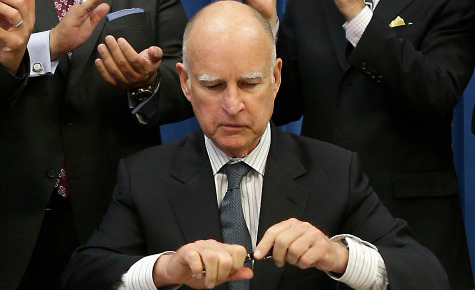
With California’s corporate and income tax revenues rising, many Democratic state legislators are eager to restore the massive funding cuts suffered by human services programs in recent years.
But on Jan. 9, as he proposed a state budget with general funds expenditures just over $113 billion, Governor Jerry Brown, a Democrat now starting an unprecedented fourth term, strongly cautioned against “exuberant overkill” in spending, and left most recession-era cuts to social services programs in place.
Brown’s proposal represents a 1.7 percent increase over last year’s budget.
The stage is now set for months of struggle over how the state will address conditions in which one in four Californians live in poverty and California ranks 46th among states in per-pupil spending on K-12 education.
Arguments for increased spending got a further boost Jan. 13 as the Legislative Analyst’s Office predicted revenues will grow even more than Brown anticipated.
While Democratic legislators praised the governor’s proposal to spend nearly $8 billion more on K-12 education and community colleges, many also urged much greater funding for social services.
State Senator Mark Leno, D-San Francisco, pointed out that the severe cuts of recent years have left “working families, students, children, the disabled and elderly” without urgently needed help.
“The best investments are those that respond to the critical needs of families at the bottom of the economic ladder and provide working people access to education, training and other programs that can help them get ahead,” Leno said. “We can make these reinvestments while at the same time preserving the budget stability we have worked hard to achieve.”
Assembly Speaker Toni Atkins, D-San Diego, called Brown’s message “a realistic and practical starting point.” She said the governor’s proposals to increase support for K-14 education, workforce development and In-Home Supportive Services to elderly and disabled Californians reflect the Assembly’s priorities.
Many Republicans also noted the state’s improving financial situation, but sharply criticized what they called continuous increases in state spending in recent years. Many strongly oppose the state’s budding high speed rail project, and cite failure to focus on a “pro-growth” agenda to make it easier to do business in California.
Democrats hold a 67.6 percent majority in the state Senate. Their 65 percent majority in the Assembly is just short of the two-thirds majority needed to increase taxes.
Advocates for restoring and increasing health and human services spending were also quick to respond.
Sarah de Guia, executive director of the California Pan-Ethnic Health Network, noted that after many years of painful cuts, many Californians continue to do without health care because it “remains unaffordable and out of reach…. The governor mustn’t squander this opportunity to fulfill his goal of making California the healthiest state in the nation.”
Anthony Wright, executive director of the Health Access coalition of over 50 organizations, pointed out in his blog that while Brown’s proposal continues the state’s current commitments to health care and health reform, it “also continues the cuts to public health programs and Medi-Cal (California’s Medicaid) rates and benefits made during the recession and doesn’t make the investments needed to reduce barriers to coverage, increase access for Medi-Cal patients, or cover the remaining uninsured.”
An issue not in the budget message is how all remaining uninsured Californians will be covered regardless of immigration status. A bill to that effect was introduced last fall by state Senator Ricardo Lara, D-Bell Gardens.
Unions of state workers and teachers were also quick to weigh in.
Kathryn Lybarger, president of AFSCME Local 3299, the largest union at the 10-campus University of California system, called the budget message “the beginning of a long overdue conversation about the future of California’s public colleges and universities.” While she said the proposal doesn’t provide funding or reforms needed to improve access and quality or prevent tuition increases, she said the union is ready to work with Gov. Brown, the legislature and the UC administration to achieve a final budget meeting those criteria. She also said Local 3299 would work to help bridge the gap between the governor and the university over funding for UC.
Lybarger was referring to the struggle that erupted last fall between Gov. Brown and UC leaders over how to fund the system, with the governor linking greater funding from the state with keeping current tuition rates, and UC leaders insisting the university must also raise tuition.
In a statement, California Federation of Teachers President Joshua Pechthalt urged the governor to work to make temporary taxes benefiting education, approved by voters in 2012, permanent. He also called for full restoration of social services.
Brown also seeks to reduce a $72 billion unfunded retiree health care liability by negotiating with state workers’ unions for employees to pay more and invest more years of service to receive the benefit.
Photo: California Gov. Jerry Brown, a Democrat, put forward a budget that does not substantially increase social services in the state. AP










